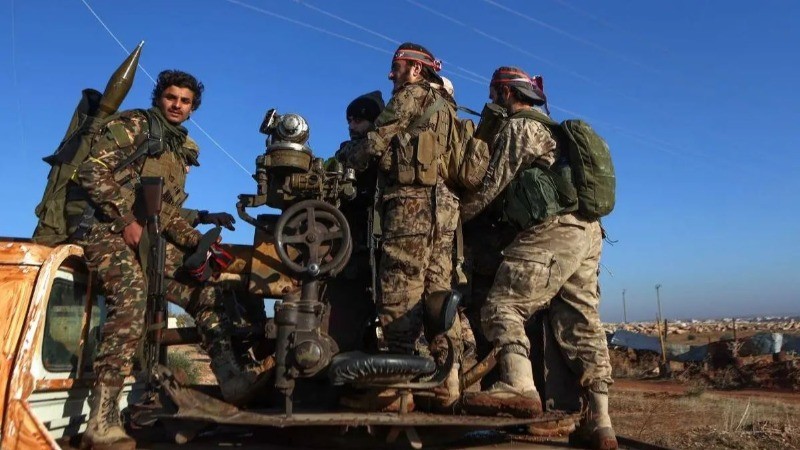
Syrian and Russian warplanes launched airstrikes on rebel-held regions in northwest Syria, near the Turkish border, on Thursday. The attacks aimed to counter a major insurgent offensive that had captured territory for the first time in years, according to sources from the Syrian army and rebel groups.
The offensive was led by the Islamist militant group Hayat Tahrir al-Sham, which initiated the incursion on Wednesday, seizing control of several towns and villages in the northwestern Aleppo province. This region is under the control of Syrian President Bashar al-Assad’s forces.
This escalation marks the largest attack since a March 2020 ceasefire brokered by Russia, which supports Assad, and Turkey, which backs the rebels. The ceasefire had temporarily ended years of intense conflict that displaced millions of Syrians opposing Assad’s rule.
In its first response to the offensive, the Syrian army claimed to have inflicted significant losses on the insurgents, describing them as terrorists. The military added that it was working with Russia and allied forces to reclaim the lost territories and stabilize the situation.
Rebel Advances and Counterattacks
Rebels reportedly advanced nearly 10 kilometers (6 miles) from Aleppo's outskirts, nearing the towns of Nubl and Zahra, areas with a strong militia presence from Lebanon’s Hezbollah, an Iran-backed group. They also targeted the al-Nayrab airport east of Aleppo, a site known for hosting pro-Iranian militias.
In response, Russian fighter jets bombed newly captured areas and other rebel-controlled towns within the opposition's last stronghold. According to opposition-run rescue services, known as the White Helmets, at least 16 civilians lost their lives in a residential area in Atareb, hit by Russian airstrikes.
The Aleppo-Damascus highway, a critical route, was reportedly closed due to the fighting, as confirmed by local residents and witnesses.
Motivations Behind Rebel Actions
Rebels said their campaign was a reaction to intensified airstrikes by Syrian and Russian forces on civilians in southern Idlib province in recent weeks. They also aimed to preempt potential attacks by Syrian government forces, which, they claimed, had been amassing troops near the front lines.
Senior Iranian Adviser Killed
In a related development, Iranian state media reported the death of Brigadier General Kioumars Pourhashemi, a senior military adviser with the Revolutionary Guards. He was killed by rebels in Aleppo. Iran has maintained a significant military presence in Syria throughout the conflict, deploying thousands of fighters, including advisors and Shi’ite militia members.
Turkish Perspective
Turkish sources noted that rebels initially launched a limited operation in response to attacks by Syrian forces. However, the operation expanded as government troops retreated.
The movements by the rebels were reportedly confined to the boundaries of a de-escalation zone in Idlib, established in 2019 through an agreement between Russia, Iran, and Turkey to reduce hostilities. A Turkish defense ministry source said Turkey was closely monitoring the developments in northern Syria and had implemented measures to protect its troops stationed there.
Hayat Tahrir al-Sham, labeled a terrorist organization by the United States and Turkey, remains a primary target of Syrian government and Russian forces. The group has long competed with Turkey-backed rebel factions that control territory along the Turkish border.
Rebel groups claim that over 80 civilians have been killed this year in drone strikes targeting rebel-held villages. Damascus maintains that it is combating al-Qaeda-linked militants and denies indiscriminately targeting civilians.
Hezbollah Media Chief Mohammed Afif Killed in Israeli Airstrike on Beirut
Israel and Hezbollah Begin Ceasefire Agreement After 14-Month Conflict
Lebanon's Shiite Community Faces Heavy Losses Amid Israel-Hezbollah Conflict